Atari ST
Top 10 Best Atari ST Games of All Time!
The Atari ST was born from a rivalry between Atari and Commodore. Atari’s 8-bit line of computers were the first to feature custom co-processors, but Atari lost their competitive advantage after the Commodore 64 was released. Atari sought an agreement with Amiga to create a new chipset for a new generation, but Commodore stepped in and bought Amiga outright while Atari was negotiating a licensing deal. The Atari ST and Commodore’s Amiga were similar machines that used the same Motorola 68000 processor. The Amiga used custom graphics processors and sample-based synthesis audio, but the simplicity of the Atari’s design gave the ST a two month head start on the market. The ST enjoyed initial success due to its low cost and high graphics performance, but publishers were reluctant to support the machine on the long-term due to rampant piracy. The machine appealed to hobbyists and enjoyed success for running music-sequencer software, but more games were released for the Amiga line.
10
Dungeon Master
1987
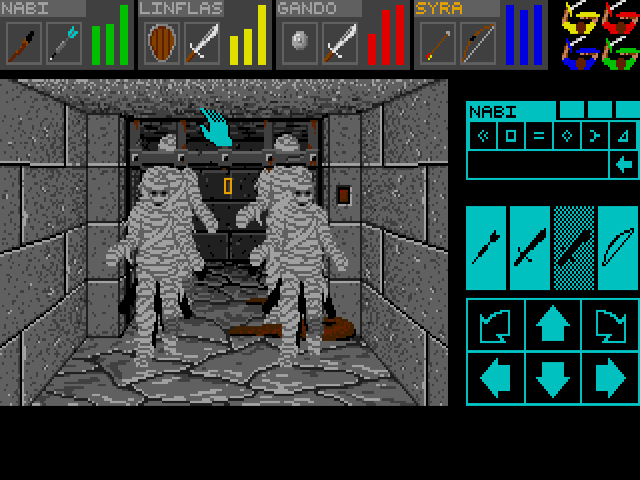
Dungeon Master is an action RPG noteworthy for its use of 3D graphics. The game employs a first-person perspective and is played in real-time. Dungeon Master feels decidedly more immersive than most other RPGs from the era, which typically featured turn-based gameplay. The feeling of immersion was heightened further by a strong emphasis on lighting and the use of sound to indicate the location of an enemy. Dungeon Master took a novel approach to leveling up. Rather than relying on arbitrary experience points, a character’s skills would improve over time in accordance to how often they were used. Its environments are somewhat repetitive and the grid-based movement feels restrictive by today’s standards, but Dungeon Master was one of the most atmospheric games of its era and one of the best western RPGs of the 1980s. The game was ported to several other platforms (a nearly identical Amiga version with improved sound was on store shelves within a year), but Dungeon Master will forever be associated with the Atari ST.
9
Super Sprint
1987
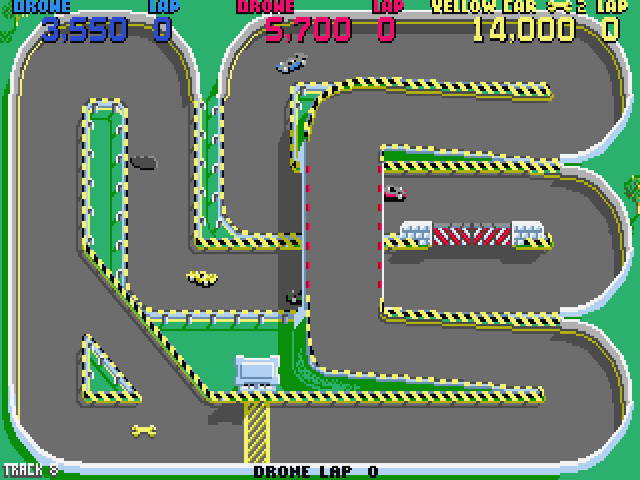
While many racing games in the 1980s attempted to emulate a real driving experience by creating pseudo-3D effects, Super Sprint kept things simple. The game has only eight circuits to race on, and none of them extend beyond a single screen. For all they lack in length, the tracks still contain overpasses, shortcuts, and a plethora of hairpin turns. There are also many hazards to avoid – including competing racecars, water puddles, oil slicks, and an inordinate amount of tornadoes. Naturally, crashing into walls or driving off bridges can also be problematic. Just like in real life, your car can be upgraded by driving over wrenches on the track. At the end of each race, players use their collected wrenches to improve top speed, acceleration, and handling. Simple, addicting, and incredibly easy to get into, Super Sprint proves that racing games don’t have to be realistic in order to be enjoyable. The fact that three people can play at the same time makes it even more fun!
8
IK+
1988
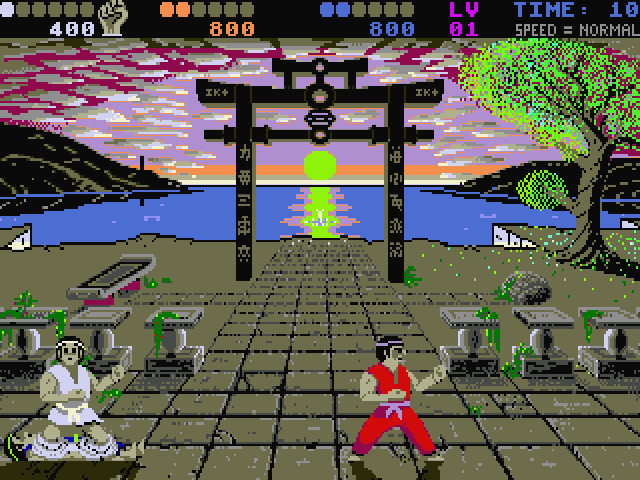
IK+ (aka International Karate +) was released before the fighting game revolution of the early ’90s, but it holds up remarkably well to this day. The game only uses a single action button, but each direction on the joystick corresponds with a unique move. In total, there are 16 different moves at your disposal. The key to mastering the game is to understand the range of each maneuver. A flying kick will be effective for opponents at a distance, whereas the good ol’ groin punch is perfect for situations where an opponent is crowding you. The game is remarkably fluid, and it feels really awesome to catch a jumping opponent with a perfectly-timed leg sweep. IK+ is an updated version of International Karate and changed things up with the introduction of a third karatake. Since the matches always involve three fighters, you’ll have even more opportunities to use your vast moveset. Opponents will often approach you from behind, so it’s nice to have the ability to do backflips or perform spinning kicks. The fighting mechanics are surprisingly versatile, and you’ll also partake in mini-games between rounds that let you knock bouncing balls away with a shield or kick bombs off the screen. The Atari ST version of Street Fighter II was laughably bad, but IK+ is a perfect example of how fighting games should have been done on the system.
7
Oids
1987
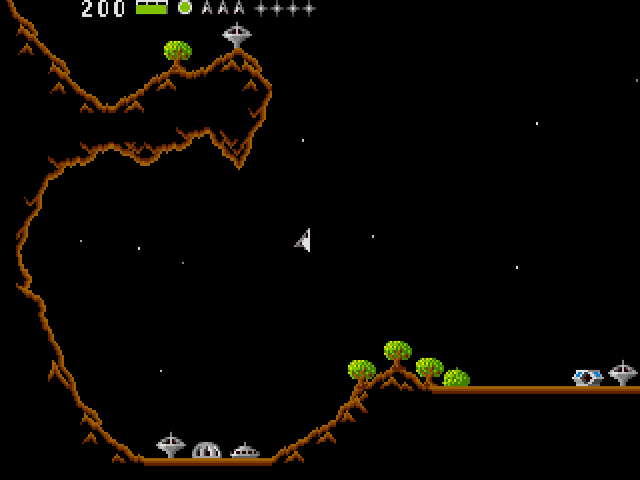
Oids could be described as “Asteroids meets Choplifter,” but it requires a lot more patience than either of those games. The object of Oids is to rescue prisoners from bases located on asteroids. There are various enemy fighters that will impede your progress, but the biggest hurdle in the game is often its inertia-based movement. As you patrol asteroids looking for enemy bases to destroy, the low-gravity makes it very easy to build momentum. In order to position yourself properly to destroy enemies or rescue prisoners, you’ll need to constantly turn and thrust in order to properly manage your momentum. Players are thankfully given a shield that will protect them from enemy fire, but it depletes their fuel supply so players are encouraged to take down their enemies as quickly as possible. That said, it’s difficult to aim properly if you can’t even control your own ship, and Oids requires a lot more precision than most space-based games do. Whether your destroying an enemy, rescuing a prisoner, or simply docking in the mother ship, Oids requires a high level of concentration and delivers a lot of excitement in return. If your interest in the game begins to wane, you can always jump into the construction mode and design your own levels.
6
Turrican II: The Final Fight
1991
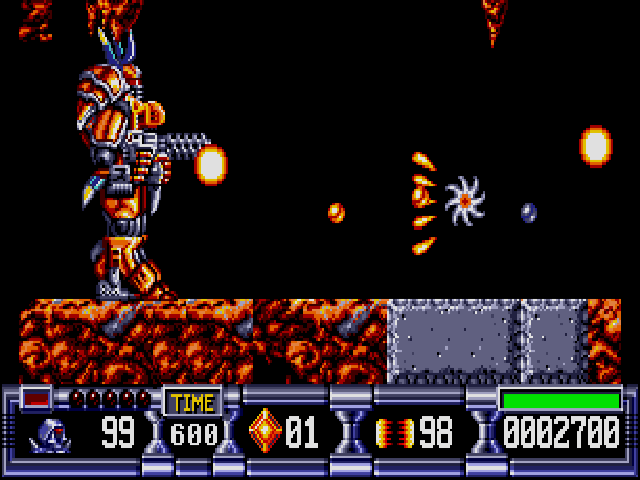
Many genres found a home on personal computers in the 1980s, but high-profile action games were few and far between. For various reasons, the Atari ST and the Amiga were basically passed over when it came to action games in favor of arcades and home consoles. Turrican was one of the first games that proved that personal computers could be an appropriate platform for the genre, and its sequel added an exclamation mark to the statement. Turrican II is a side-scrolling action/platform game that features cool weapons, large levels, impressive bosses, a legendary soundtrack, and a whole lot of explosions. The game’s best aspect is the variety of weapons available to the player. The Ghostbusters-like beam that circles the player and destroys everything in its path is pretty great, but I’m partial to the wheel item that could be described as a cross between Metroid‘s morph ball and a buzz saw. A lot of the best games on the Atari ST were driven by patience and strategy, so a game like Turrican II that was focused more on pure action was a nice change of pace.
5
Sensible Soccer International Edition
1993
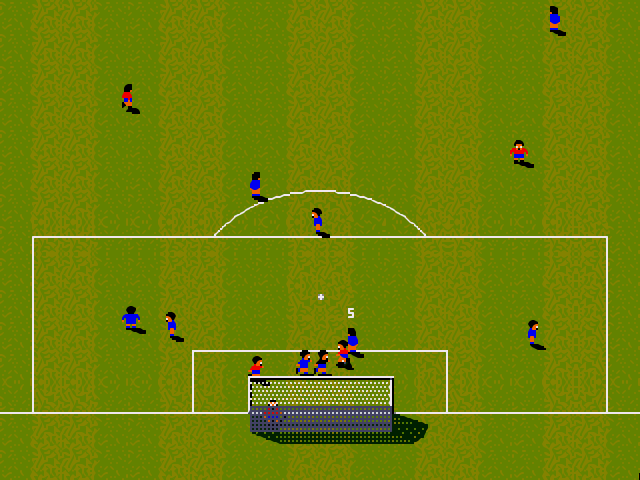
Sensible Soccer is named after its developer, Sensible Software. “Sensible” is also an accurate description of the game. Sports games in the early ’90s often fell into a trap of trying to depict athletes with as much realism as possible. The desire to have large, detailed sprites often led to lethargic and boring gameplay. Sensible Soccer puts gameplay ahead of graphics and uses an overhead view with a zoomed-out camera. Sure, the tiny sprites lack detail, but the fact that you can see so many players on screen at any given time does wonders for the playability of the game. The gameplay is fast, the controls are simple, and the overall experience is a lot more fun than most sports games. Sensible Soccer International Edition was the third (and final) iteration of the game released on the Atari ST and included minor changes like on-screen referees and a new World Cup tournament. The updates in each version are not overly significant, and you can’t really go wrong with any version of the game.
4
Lemmings
1991
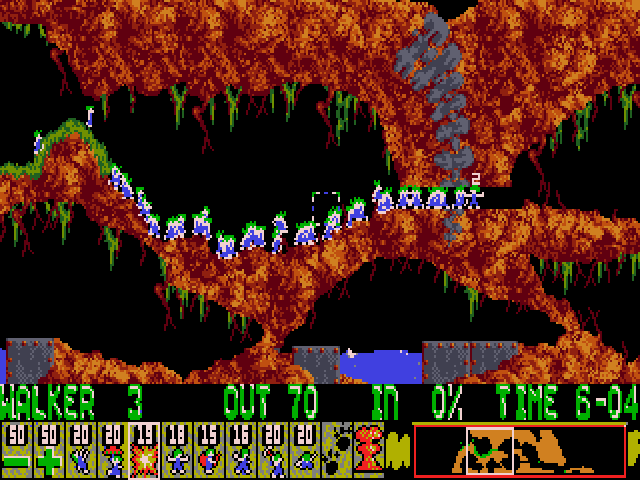
Years before creating Grand Theft Auto, Rockstar Games was known as DMA Design and were best known for the Lemmings series. The game was a simple and humorous strategy game that required players to protect groups of mindless lemmings by bestowing them with various abilities. If a lemming was about to walk off a cliff, you might give them a parasol to help them float safely to the ground below. Likewise, if a lemming found themselves walled in, you could either give them the ability to dig through the ground or the ability to build a staircase to reach higher ground. The lemmings in the game are based on the misconceptions that real life lemmings are prone to mass suicide (thanks, Disney), so you have to think very quickly to prevent the lemmings from doing something stupid. Lemmings is more closely associated with the Amiga in most people’s minds, but the Atari ST version was on store shelves within a month of the Amiga release. The Atari ST port doesn’t support two mice during the two-player mode and the audio on the Amiga is a little more advanced, but the versions are nearly identical from a gameplay perspective.
3
Another World
1991

Several years before 3D games became the de facto standard in the video game industry, Another World wowed gaming audiences with its rotoscoped animation and use of simple polygons. The game tells the story of a scientist who is transported to a strange new world after a failed experiment. Lost and alone in a foreign land, the scientist is left to figure things out for himself. Players aren’t given any specific directions, so it becomes very easy to sympathize with the protagonist. The game is broken down into separate levels, but the goals are often ambiguous. Most games challenge players with figuring out how to do something, but the hardest part of Another World is figuring out what to do. Trial and error is often required, but the solutions all make sense. The game focuses on fluid, lifelike movements rather than using unnatural physics that platformers were typically known for. Prince of Persia deserves tremendous credit for popularizing the concept of a “cinematic platformer,” but Another World brought the genre to new places. Games like The Last Guardian and ICO wouldn’t exist without games like Another World. Another World was ported to dozens of different consoles and computers, but the Amiga and Atari ST versions were the originals. The Amiga version has better sound quality and richer colors, but the ST version was every bit as fluid.
2
Bubble Bobble
1987
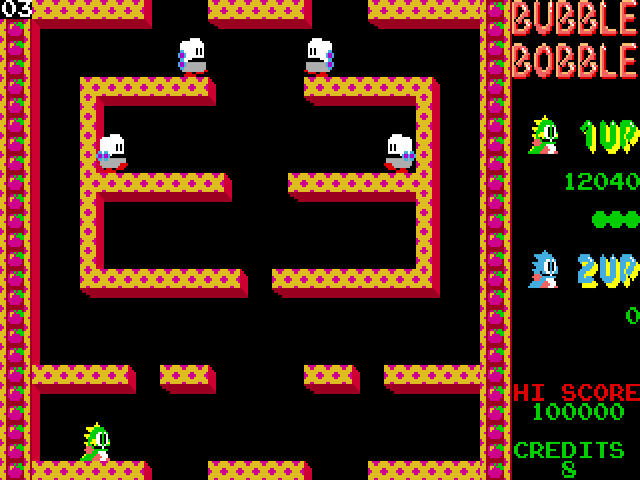
The Atari “ST” stood for “sixteen/thirty-two” and was a reference to the Motorola 68000’s 16-bit external bus and 32-bit internals. Bubble Bobble was designed for 8-bit hardware and didn’t push the Atari ST nearly as hard as some of the other games on this list. Nevertheless, I say with great conviction that Bubble Bobble is the most timeless game released on the Atari ST. Bubble Bobble was one of the finest arcade games of the 1980s and one of the best co-op games ever devised. The premise of the game involves two bubble-blowing dinosaurs who use said bubbles either to trap their enemies or to use as temporary platforms. Defeated enemies are typically converted into food rewards, which often inspires competition between players as they race to retrieve them. Each level of the game is confined to a single screen, but there are 200 stages to play through and a lot of variation is seen. Some might see Bubble Bobble as a boring choice for this list, but the fact that it was released on virtually every other platform known to man doesn’t diminish its greatness.
1
Civilization
1993
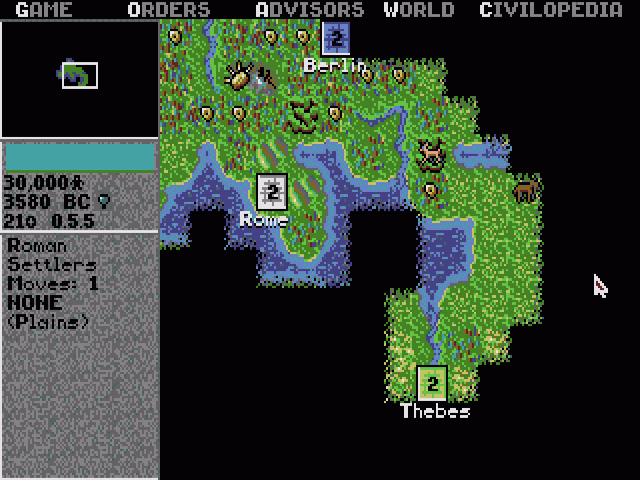
Civilization is one of the most legendary turn-based strategy games of all time and one of the last major releases for the Atari ST. The game lets you build an entire civilization from the ground up – starting with nomadic tribes in 4,000 B.C. and spanning well into the future. As the nation’s ruler, it’s your responsibility to build cities, expand your teritorry, and keep your citizens happy. A lot of tasks are fairly straightforward. For instance, you’ll need to produce food to feed your citizens, and you’ll need a military to protect them. The game is surprisingly complex for the era though, and you’ll need to be mindful of political ideologies and diplomacy tactics. Caravans can be sent to faraway cities in the name of diplomacy, but diplomats can also conduct espionage or bribe enemy soldiers to fight for you. There are so many valid ways to play the game. You can choose to use your available resources to develop technologies at home, or expand your territory and steal resources by crushing opposing civilizations. The game’s interface is admittedly cumbersome and things progress pretty slowly in the early goings, but Civilization is one of those games where “a few more minutes” can easily turn into several hours. When a new island is discovered or new technology is introduced, you’ll have a natural desire to make use of your newfound resources. The evolution of mankind is driven by the desire to step forward, and this desire for progress is the very reason why Civilization is so addictive.

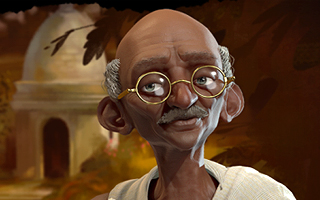
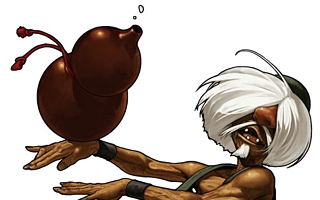


Do you agree with this list? Let us know what you think by leaving a comment below. Your opinion matters!